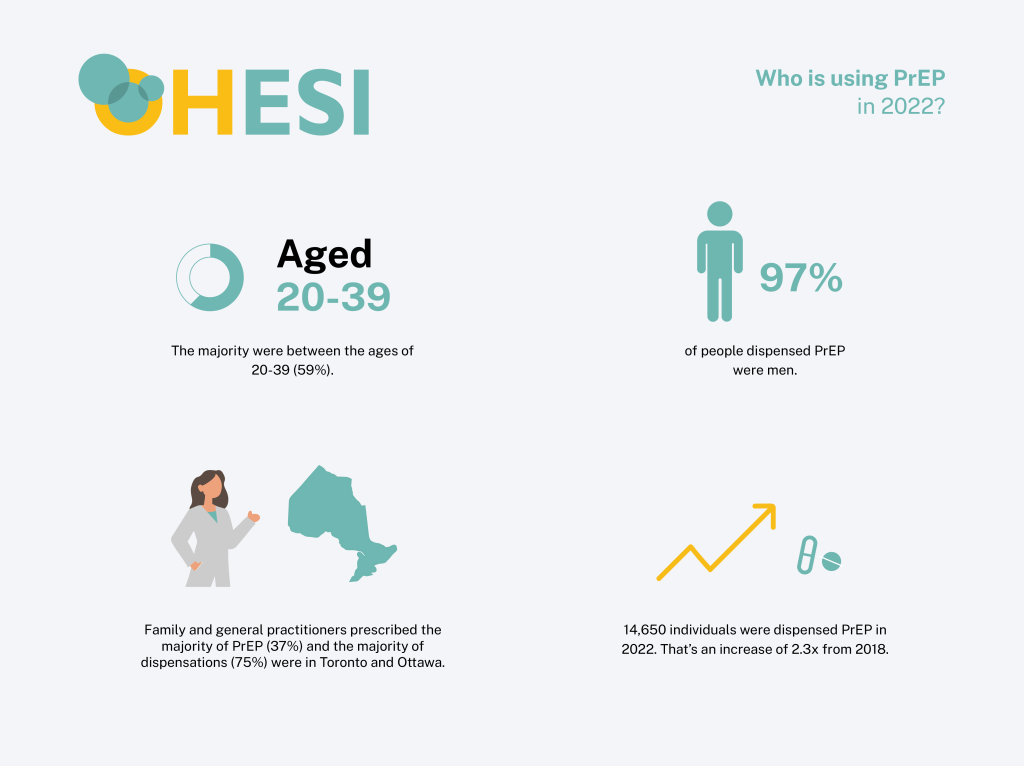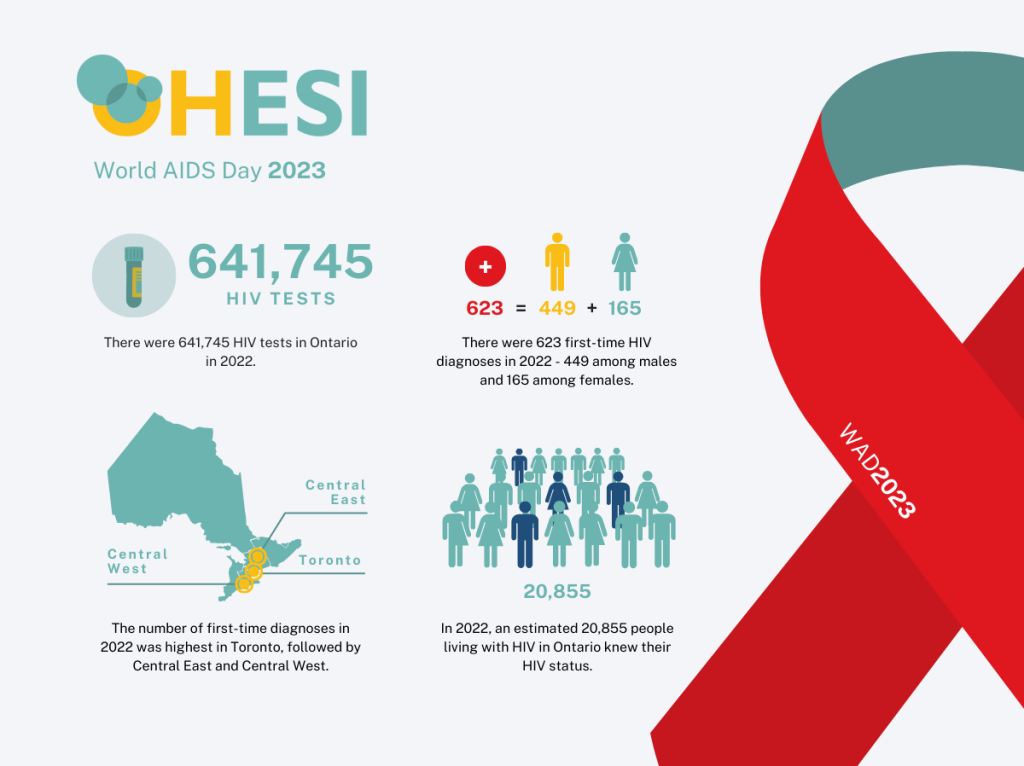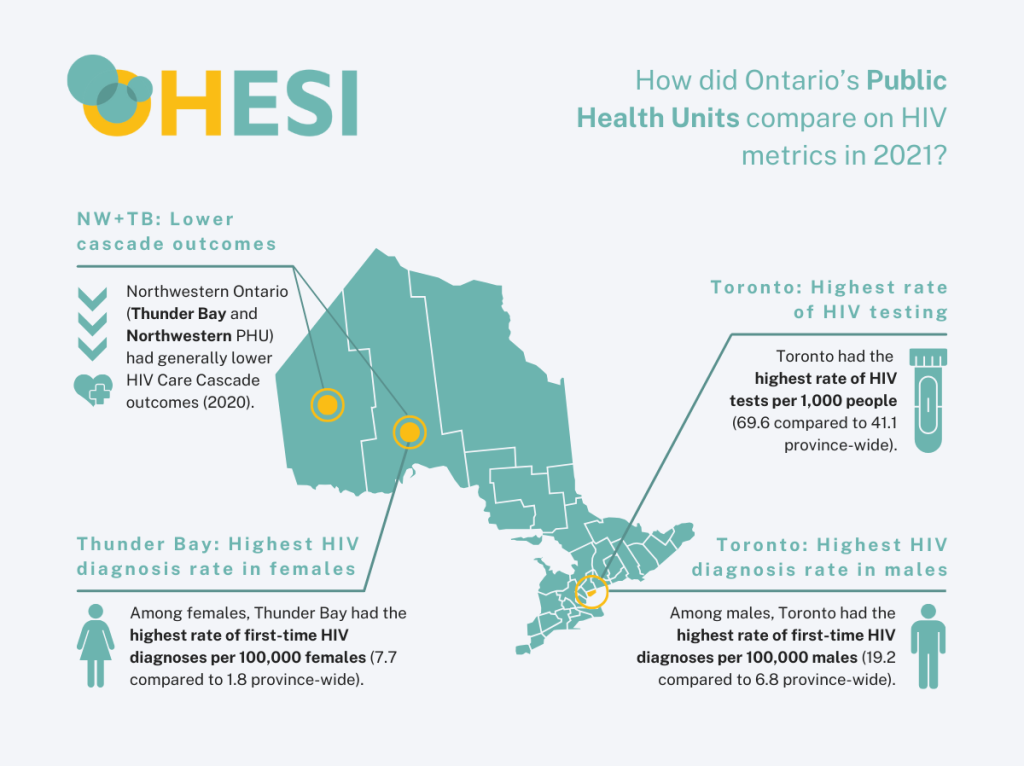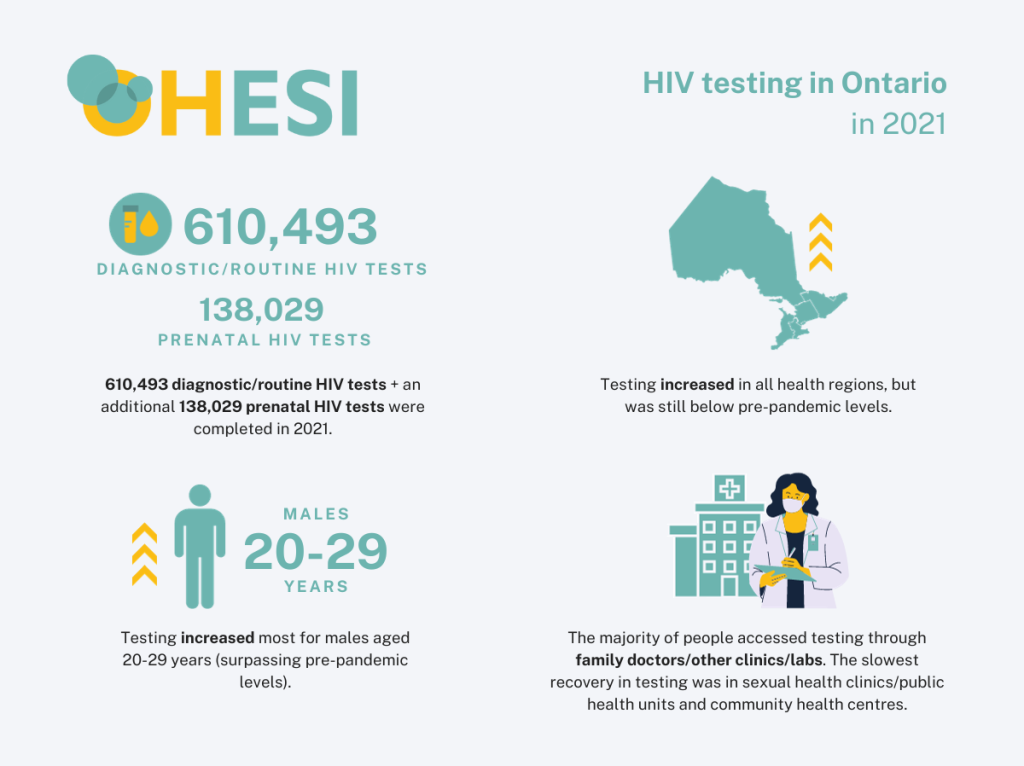Jun 10th, 2021
OHESI releases new report on HIV Testing in Ontario 2019
The Ontario HIV Epidemiology and Surveillance Initiative (OHESI) is pleased to announce the release of a new report titled “HIV Testing in Ontario, 2019”.
A robust HIV testing program ensures that individuals at risk receive regular HIV tests and that people who are living with HIV can learn their status and be linked to care. HIV testing is also an important gateway to prevention services for people who test HIV-negative. Understanding trends in HIV testing can also help Ontario measure the success of its HIV testing initiatives.
In the 2019 HIV Testing Report, OHESI describes the trends in HIV testing in Ontario over the past decade (2010-2019), with a focus on HIV tests in 2019. The report includes analyses broken down by type of test (nominal, coded, and anonymous), sex, age, HIV exposure category, and geographic location (health regions), as well as information specific to rapid/point-of-care (POC) and prenatal HIV testing. New to this report are analysis by HIV test submitter type and by transgender identity and race/ethnicity (based on the new HIV test requisition implemented in 2018). Metrics described in the report include the number and percent of HIV tests, rates of HIV tests per 1,000 people, and HIV test positivity rates (i.e. the percentage of HIV diagnostic tests with a confirmed HIV-positive result).
Some key findings:
- In 2019, 677,251 HIV tests were conducted in Ontario – equivalent to an HIV testing rate of 46.6 tests per 1,000 people. Of note, negative prenatal HIV tests were analyzed separately in this report.
- While the number of tests conducted remained relatively stable between 2010 and 2013, it increased 53.3% between 2013 and 2019. The HIV testing rate per 1,000 people also increased 42.4% during this time.
- In 2019, the number of HIV tests was slightly greater among males (333,521) than females (325,317). Only in 2017 and 2019 was the number of HIV tests among males greater than among females.
- While the HIV test positivity rate decreased over time for both sexes, it was consistently three to five times higher among males than females. In 2019, the HIV test positivity rate was 0.15% for males and 0.05% for females.
- Between 2015 and 2019, the HIV testing rate per 1,000 people increased for all age groups by an average of 34% and was consistently highest in the 25 to 29 age category.
- The HIV test positivity rate in 2019 was highest in the 55-59 age category for both males (0.26%) and females (0.09%); however, people testing in this age category tested at a lower rate and had a relatively lower number of positive tests.
- In 2019, the vast majority of HIV tests (96.3%) were nominal and the remainder were coded (1.2%) or anonymous (2.4%).
- While the HIV test positivity rate has decreased over time for all test types, it was consistently at least four times higher among people who tested anonymously than those who tested nominally. In 2019, the HIV test positivity rate was 0.09% for nominal testing, 0.14% for coded testing and 0.48% for anonymous testing.
- Between 2015 and 2019, the proportion of HIV tests in males attributed to men who have sex with men (MSM) increased from 10.8% to 13.1%. Approximately 63% of HIV tests among males had unknown exposure category.
- In 2019, the HIV testing rate per 1,000 people was highest in Toronto (80.0) followed by Ottawa (53.0). In the other five health regions, the HIV testing rate ranged from 31.4 (Eastern) to 40.2 (Central East). The number of HIV tests and the HIV testing rate per 1,000 people increased between 2018 and 2019 in all health regions, with the exception of the South West region.
- In 2019, HIV tests submitted by “other physicians/clinics/labs” comprised the largest proportion of HIV tests (44.2%), followed by immigration physicians/clinics (14.1%) and HIV treating physicians/clinics (11.5%).
- In 2019, the largest number of positive results among males were submitted by “other physicians/clinics/labs” (140, 27.2%), and among females were submitted by immigration physicians/clinics (53, 31.4%).
- In 2019, of the 223,198 HIV tests submitted via the new test requisition with known sex, 178 (0.08%) were among transgender females, and 114 (0.05%) were among transgender males.
- In 2019, among the 226,716 HIV tests submitted via the new HIV test requisition, the largest proportion of HIV tests was among White individuals (29.3%), followed by Black (5.8%), East/Southeast Asian (4.9%), and South Asian (3.6%) individuals. Approximately half (49.7%) of these tests had unknown or missing race/ethnicity information.
- Between 2014 and 2019, the number of point-of-care (POC) tests decreased from 30,117 to 19,414 tests, while the POC HIV test positivity rate fluctuated between 0.42% (2015) and 0.69% (2018) before decreasing to a low of 0.32% in 2019.
- In 2019, the vast majority of HIV tests (97.1%) were standard, laboratory tests and the remainder were POC (2.9%); the majority of POC tests are provided anonymously.
- Between 2012 and 2019, the estimated proportion of all pregnant people who received a prenatal HIV test increased from 94.2% to 97.4%.
Stay tuned for future reports from OHESI!






